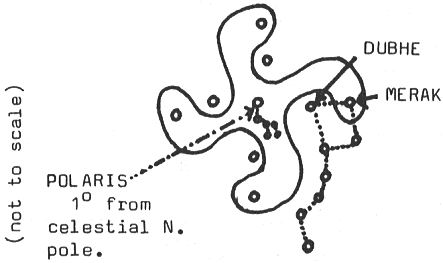
Journal of Geomancy vol. 4 no. 1, October 1979
{13}
Although the swastika is an ancient and powerful Pagan symbol, I feel it may be wrong to dismiss its modern uses/abuses, for therein might lie some clue(s) to its origins. As an anarchist, I consider the study of people’s willing obedience and submission to authority to be of great importance. How can it be that National Socialism, surely the most repugnant of all political ideologies, is capable of binding the masses to its reactionary authoritarianism and irrational racialism in times of material and cultural impoverishment? Space does not permit, and many readers will consider that this is not the correct journal, for a detailed enquiry into this question. But Fascism is obsessed with symbolism, and this is typified by its abuse of the swastika. In a chapter on the symbolism of the swastika, from his book Mass Psychology of Fascism, Wilhelm Reich describes the swastika as a sexual symbol. Citing examples from Semitic (ironically), Indian, Greek and other art, he shows the use of the swastika as symbolic of the male principle. (A Pagan symbol of the Sun, the generative force, Bel, Woden, Lucifer the Lightbearer or whatever …) Reich goes on, however, to describe the swastika as a graphic representation of two interlocked human figures; an explicit sexual or fertility symbol. And thus in the manner of Reichian psychology, we have Fascism unconsciously offering an overt sexual symbol to the working class who suffer from the sexual repression of bourgeois morality and capital’s social relations. The symbolism would have a greater effect on the masses’ unconscious emotionality, and therefore make Fascism seem the more attractive, the more spiritually and sexually impoverished they were. An abuse of power indeed, despite the fact that Hitler and his acolytes were unaware of the real meaning of the swastika, and tried to link it up to their racial–mystical ideas.
The idea of the swastika as a Pagan symbol of the generative solar force, or as a geomantic representation of the universe, are attractive ones, reinforced by the “eight dots” representing our very own high days and holidays, but certain Indian swastikas have twelve “dots”, three around each of the four points of the swastika. Perhaps the swastika was a navigational mnemonic, and its predominance in Scandinavian countries, and countries to which Norse voyages of exploration were made, would lend weight to this.

The constellation Ursa Major is circumpolar, and everyone knows that if you follow a line from Merak–Dubhe (the ‘blade’ of the ‘plough’) you arrive at the star Polaris in Ursa Minor, which is less than one degree from the Celestial North Pole. A useful navigational aid, with North remaining a fixed point in the sky, held forever in time and memory at the centre of the swastika, the symbol in its entirety representing the cosmos, but perhaps such information would be almost too simple for our ancient forefathers? Navigation can be a tricky business however, and there is a present time Icelandic shipping company whose house flag is a pale blue ground emblazoned with a white swastika! (referred to as the ‘Hammer of Thor’). Many questions remain unasked, never mind unanswered, such as why do some swastikas go against the sun, while others go sunwise? Could they be two similar symbols but with quite distinct meanings? Indeed, UFO researchers might even care to note the similarity between the pictorial shapes of many swastikas and spiral galaxies such as Andromeda, or M101 in Ursa Major! Meanwhile, back on Midgard, the subject of swastikas cries out for further investigation, and the forthcoming Fenris-Wolf publication must surely be eagerly awaited by all.